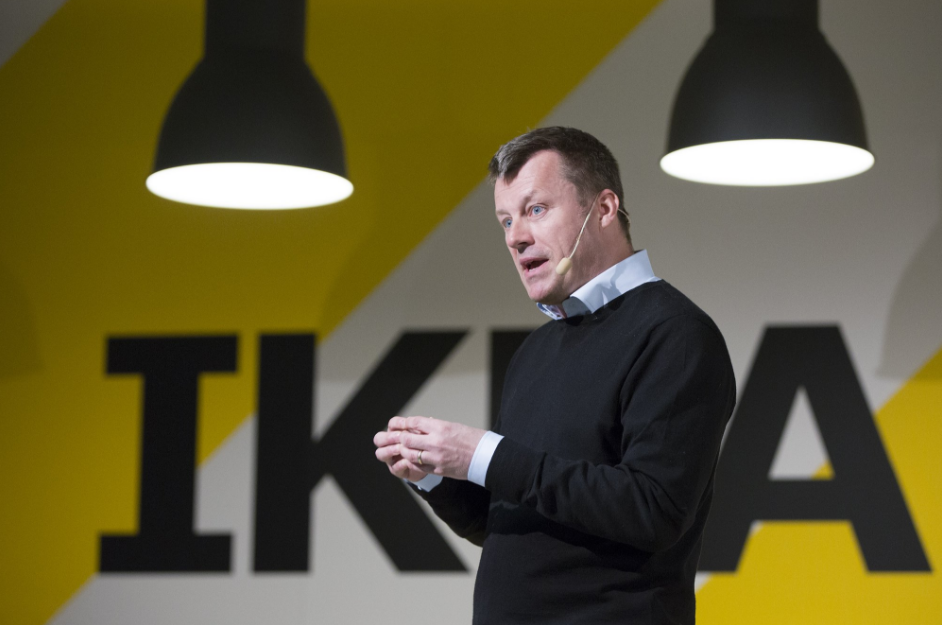As various retail companies scramble to beef up their online presence and save themselves from drowning in the wave of changes the industry has been experiencing, famous Swedish furniture company IKEA (traded privately) seems to be taking it all in stride. Still, after revamping its organizational structure, opening more locations, and initiating a program to support startups, the changes IKEA is now facing is one of the biggest for the past 30 years.
Head of IKEA’s new business development and innovation unit — called Inter Ikea — Torbjorn Loof and incoming IKEA CEO Jesper Brodin announced some of the company’s new initiatives both digitally and at its physical stores earlier this week. The presentation was held amongst hundreds of journalists and reporters in Almhult, with Loof citing, “We want to open the doors and give you a peek into the future.”
IKEA’s Break Into The Digital World
Like many retailers, IKEA is now pushing to bulk up their online presence thanks to the growing popularity of e-commerce, as Loof addressed at the gathering in Almhult. However, unlike some big name retailers who are fighting against e-commerce sites like Amazon.com, Inc (NASDAQ:$AMZN) and Alibaba (NYSE:$BABA), the furniture giant is partnering third-party e-commerce companies and selling furniture through these companies’ e-commerce sites, reported Reuters. Pilot programs for these projects are expected to start sometime in 2018, Loof said. The Inter Ikea Head did not specify which platform IKEA will be working with, only that tests will be conducted to determine just exactly what digital shopping and digital shopping centers mean for the future.
What really sets IKEA apart from others in its digital initiatives, however, is that the company is also partnering with tech companies like Apple (NASDAQ:$AAPL) in an attempt to invest in augmented reality (AR) and virtual reality (VR). IKEA hopes to use these new technologies to further enhance the digital shopping experience — customers could, for example, project a piece of furniture to see if it’s suitable for their homes using AR before deciding whether or not to purchase it online. No hassle of a trip to an IKEA store, and a lower chance for another trip to return a product.
For now, however, all that has been revealed about IKEA’s partnership with Apple is that it has mainly done so for the tech company’s AR domain. “It’s just one among our many initiatives to make our products available for as many people as possible. And we are seeing big opportunities by leveraging upcoming digital technologies to their fullest,” Loof informed Swedish financial reporter Di.
New Tech for Old Products
Besides digital initiatives, IKEA is also looking for more ways to innovate its products. Its newest line of furniture can be built up to 80% higher compared to previous furniture products. The speediness is thanks to IKEA’s new “click” technology that allows you to connect the pieces of furniture using small knobs, or wedge dowels, that click into pre-drilled holes. No screws, no famous IKEA-wrenches, and — hopefully — no more hours upon hours of frustration will be involved in the assembly of this new line.
During the company’s Democratic Design Day, Brodin demonstrated the “click” technology with a challenge to assemble an IKEA kitchen cupboard in less than a minute. He was able to do so. Upon Brodin’s demonstration, Loof boasted, “I would like to describe this as our biggest innovation since the flat pack.”
IKEA’s new line of furniture featuring the “click” technology is now available in the EKET series.
Growing Already-Existing Technologies
While IKEA has been playing up innovation with its ambitious AR goals and an impressive furniture assembly technology, it’s also further growing existing inventions. A clear indication of the company’s attention to detail, one of IKEA’s less noticeable — yet still highly impactful — recent innovations was its replacement of wooden pallets with cardboard pallets. The cardboard pallets first made their debut in 2000, and have since then reduced IKEA’s transport-related emissions by around 29%. Since 2012, the cardboard pallets have allowed the company to:
- Save more than $200 million annually on shipping costs alone
- Increase truck efficiency by 15%. This means that 15% fewer trucks are used to ship the same amount of products
- Decrease the amount of CO2e produced annually by 75,000 metric tonnes
Now, IKEA is looking to grow the cardboard pallet by implementing a form of it to customer deliveries, beginning in Finland. Cargo weight and transportation could be significantly reduced if all the wood, plastic, and metal were removed from delivery pallets. If everything goes according to plan, all plastic and metal pallets will no longer be used in a year, logistics director of IKEA Finland Jukka Taskinen told news reporter Kauppalehti. Return loads to Sweden and carbon emissions are expected to decrease.
Summary
IKEA continues to impress its consumers and shareholders with its innovations and focus on forward thinking. In a time where the retail industry is seemingly suffering, it looks like IKEA will hold its ground. The furniture company’s stock could be something to look into if a trader or investor is unsure about their current retail company investments.
Featured Image: Lecho.be











